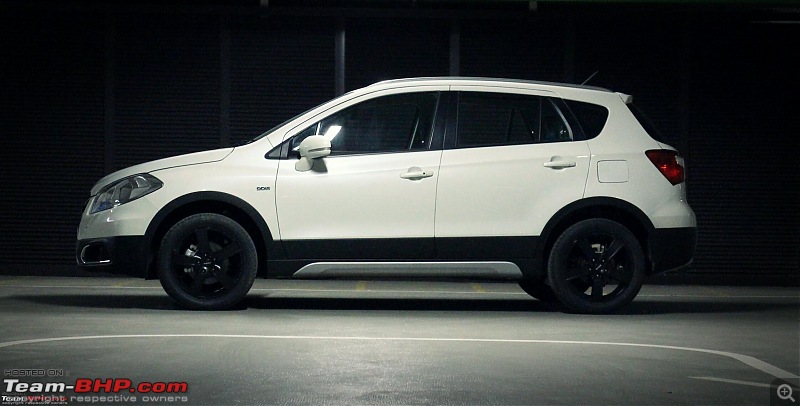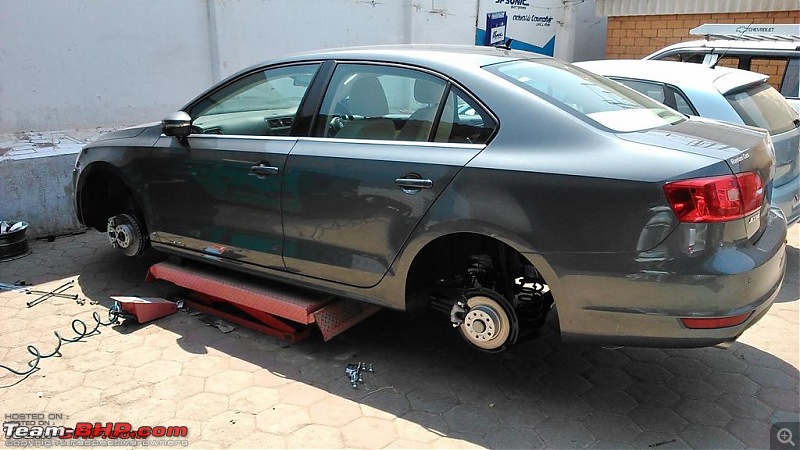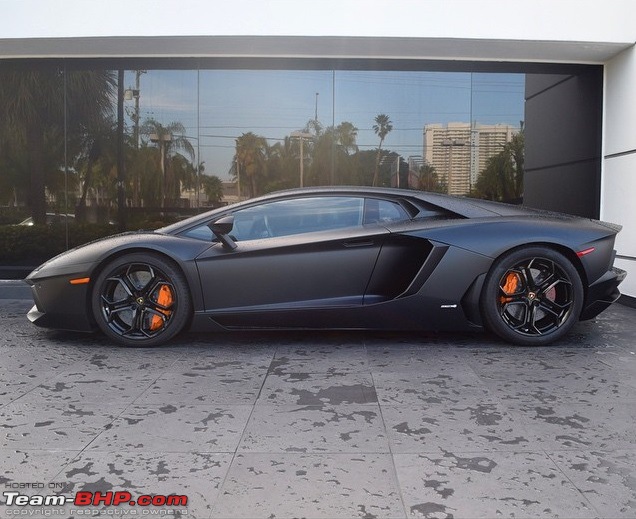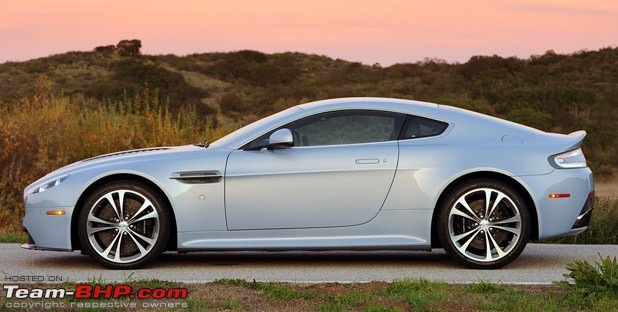| |||||||
| Search Forums |
| Advanced Search |
| Go to Page... |
 |
| Search this Thread |  86,244 views |
| | #1 | |
| Newbie Join Date: Sep 2016 Location: MAA/DUB
Posts: 15
Thanked: 39 Times
| Brake Caliper Location - How do engineers decide on its placement? I have been wondering as how do manufacturers decide where to place the brake calipers in a round disk brake?   Below is a crude diagram which I have drawn using Microsoft paint, for better understanding: P.S: Consider this as the front passenger side wheel in RHD vehicles, other images are also taken in the same scenario  From what I have gathered in the Fron wheel: front portion is commonly used in the passenger cars, the rear side of the disc is used in most of the sports cars. There are few exceptions though. Passenger Cars:  Our Mi10's S Cross 1.6 having Front Disc: Front Rear Disc: Top  Our graaja's VW Jetta Front Disc: Front Rear Disc: Front  Lamborghini Aventador Front Disc: Rear Rear Disc: Front  Aston Martin Vantage Front Disc: Rear Rear Disc: Front Conclusion from Images: Front Wheels: 1. Normal Cars: Front 2. Sports/Super Cars: Rear Rear Wheels 1. Normal Cars: Front 2. Sports/Super Cars: Front This video has quite a few reasons listed but I do not agree on all the facts proposed by them, Few points are reasonably acceptable. Upon researching quite a bit I found the below reasons, 1. Accessibility during maintenance/Ease of bleeding - Accepted 2. Load Applied on the caliper- Accepted 3. Weight Distribution- Naah 4. Aerodynamics- Naah 5. Suspension packaging- Accepted 6. Vehicle Purpose- Naah Few reasons I found was, 1. Accessibility during maintenance/Ease of bleeding Mounting at 6 ‘o’clock position would help in lowering of Center of Gravity but do not provide ease of bleeding, too vulnerable to debris so imparts no particular advantage. 12 ‘o’ clock position leads to difficulty in bleeding and increases height of Center of Gravity. Hence, the 3 ‘o’ clock and 9 ‘o’ clock positions are the most common in front of or behind the rotor as this provides good protection, allows the caliper to be mounted with the bleed screw up for ease of bleeding, lowers height of Center of Gravity, lower polar moment of inertia and provides better ground clearance. 2. Load Applied on the caliper Loads applied on the caliper mounts when the vehicle in motion. When brakes are applied in a car a part of the kinetic energy of the wheels is dissipated as heat, however much of the energy is transmitted onto the brake assembly itself(this explains their sturdy construction). Now the brake assembly is a highly stiff unit and would not dissipate the energy the way a spring or a gas-pot would do. Thus the point at which the brakes are anchored to the chassis would be subjected to a large load in turn. Therefore it implies that the chassis location where the brake assembly is fixed to must be a hard point(just like the cables of a suspension bridge is anchored at two towers buried deep in bedrock on either side of the bridge) 3. Weight Distribution As you know already for a body to be stable it primarily depends on the center of gravity. "COG is the point at which the entire weight of the body acts upon". In cars the COG is near the drivers seat for best stability under various conditions. Following are the conditions for stability based upon COG:
So the caliper positions are more centered and low as possible in sports cars. 5. Suspension packaging: The position of the brake calipers should not interfere with the suspension elements (control arm, dampers,..) of an automobile.Not much to it, the calipers are positioned, giving way to the suspension components which takes first place over the caliper positioning. 6. Vehicle Purpose: SUV built for off road purposes, then you are going to be positioning the calipers in a way, that the elements of off road conditions like mud,dust and water don't affect your calipers in any way. Finally the theory which made sense was: Quote:
| |
| |  (17)
Thanks (17)
Thanks
|
| The following 17 BHPians Thank Thanga_RS for this useful post: | audioholic, dailydriver, Gannu_1, graaja, GTO, Karthik Chandra, kpzen, landcruiser123, lemedico, Nohonking, R2D2, Rehaan, SnS_12, Sparky, SS-Traveller, theexperthand, vishy76 |
| |
| | #2 | ||
| Team-BHP Support  Join Date: May 2004 Location: Bangalore
Posts: 20,381
Thanked: 17,282 Times
| Re: Brake Caliper Location - How do engineers decide on its placement? Quote:
Quote:
| ||
| |  (1)
Thanks (1)
Thanks
|
| The following BHPian Thanks Jaggu for this useful post: | Thanga_RS |
| | #3 |
| BHPian | Re: Brake Caliper Location - How do engineers decide on its placement? Very good observation.  Observed this different positioning of brake calipers, but never tried to find out. I used to think something to do with cars engine location (FWD vs RWD), engine power, and smoothness of brake application Just now goggled it  and found this informative link below to start with our topic:- and found this informative link below to start with our topic:- https://www.quora.com/How-do-manufac...brake-calipers |
| |  (1)
Thanks (1)
Thanks
|
| The following BHPian Thanks Sail for this useful post: | Thanga_RS |
| | #4 | |||
| Newbie Join Date: Sep 2016 Location: MAA/DUB
Posts: 15
Thanked: 39 Times
| Re: Brake Caliper Location - How do engineers decide on its placement? Quote:
Quote:
Quote:
Even quite a few observations found in this thread are from the URL which you have provided. Will try to provide more information as I am trying to search through the web. | |||
| |  ()
Thanks ()
Thanks
|
| | #5 |
| BHPian Join Date: Nov 2015 Location: MH01/TS09
Posts: 755
Thanked: 1,924 Times
| Re: Brake Caliper Location - How do engineers decide on its placement? The foremost reason is the performance. This depends on primarily the radial distance of the calliper- further the calliper, better is the performance (considering the same pad area). You also get a bigger disc and an added contact area. The second aspect is the which truly affects the positioning is the strength of the mounting point. As we know the brake calliper is mounted on the knuckle using bolts. When the brakes are applied, the reaction force is borne by the knuckle. The knuckle (IMHO- the best part of any car- integrating steering, suspension, wheels brakes and transmission together) is a highly complicated part handling multiple stresses. traditionally it is a heavy part and any additional weight that can be shaved off is better. When modelling the knuckle on CAE, the point where the stresses are optimal are chosen. There are 100s of iterations done in order to optimise the position. Once the base design is finalized, the forging/casting simulations are done. If there is a complexity in the die/any additional residual stress due to the process are checked and iterations happen to reduce these residual stresses. High importance is given to stresses as this is one of the highest strength component facing a lot of abuse. Beyond this, factors of serviceability, cooling, boise(another very important parameter- resonance is a nasty factor in brakes), come into play to decide the final position of the caliper. |
| |  (3)
Thanks (3)
Thanks
|
| The following 3 BHPians Thank 1.2TSI7DSG for this useful post: | james, Nohonking, vishy76 |
 |


